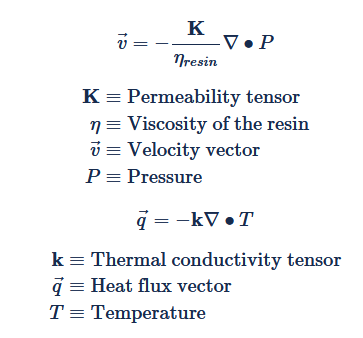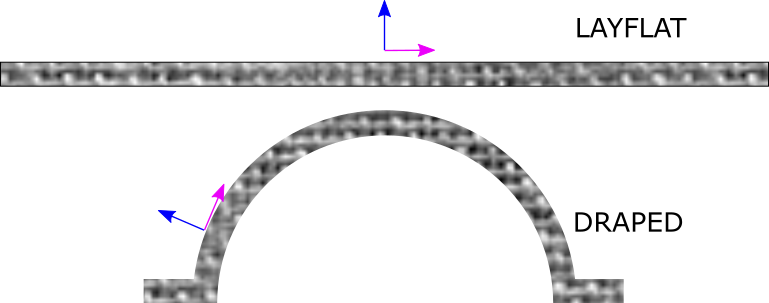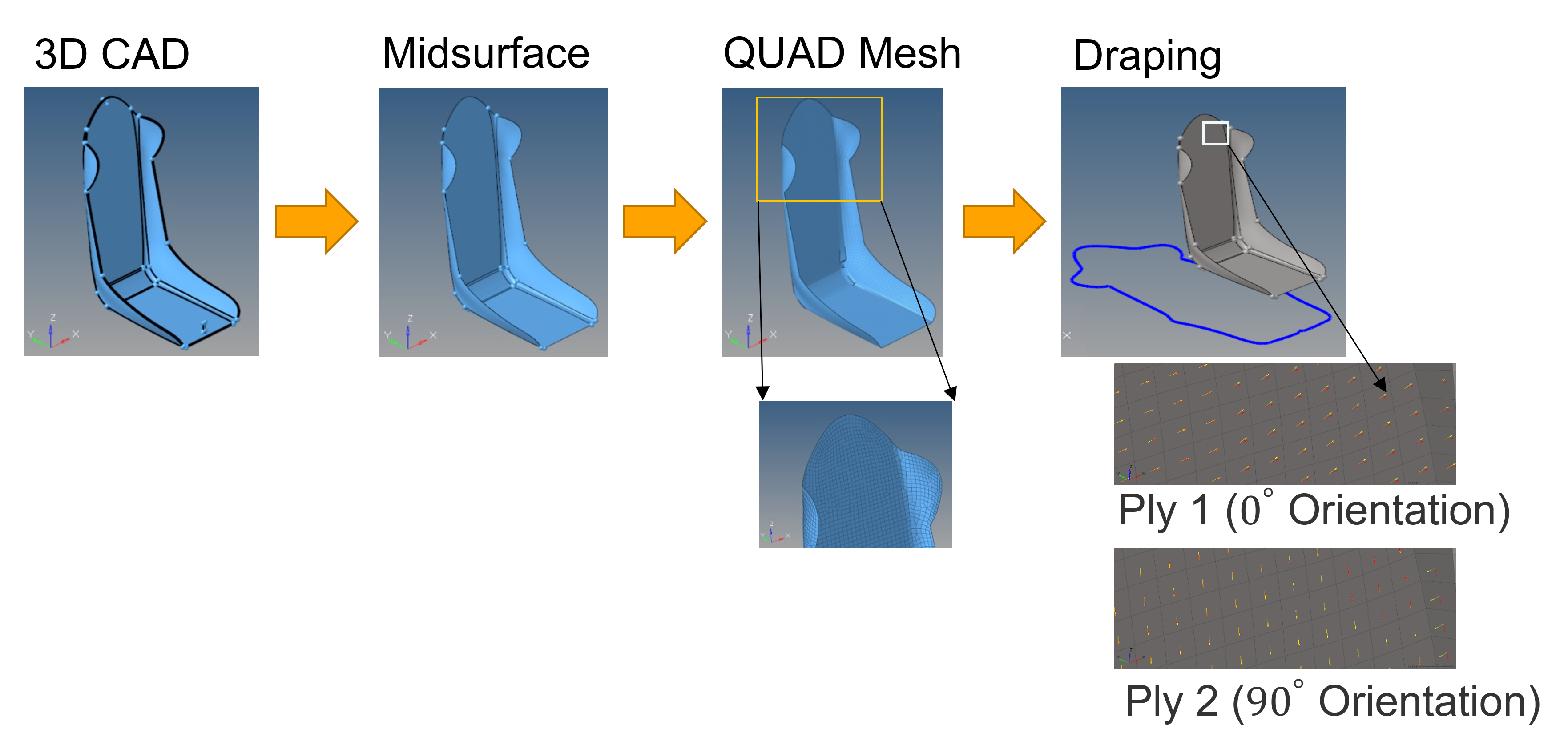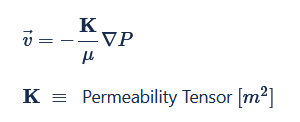Preform Material Data


Lay Flat and Draped Preform

Draping Computations


Known Limitations in Draping Computation
- For complex models, the automatic midsurface extraction may fail. The workaround is to create the midsurface manually and Inspire will use that interface and not try to create one automatically.
- Inspire does not support post-processing of draping results.
Density
- Units: kg/m3
- Keyword: Density
- Description: Density of the preform. This the density of the fiber (glass, carbon. kevlar, etc.)
Specific Heat
- Units: J/(kg-K)
- Keyword: SpecificHeat
- Description: Specific heat of the preform
Thermal Conductivity Tensor
- Units: W/(m-K)
- Keyword: Conductivity_X, Conductivity_Y, Conductivity_Z
- Description: Thermal conductivity is tensor data, and it is supported in the local coordinate systems.
Permeability Tensor

- Units: m2
- Keyword: Permeability_X, Permeability_Y, Permeability_Z
- Description: Defined in Darcy's law for porous media. The oil mining industry uses a unit called Darcy which is physically more intuitive.

Porosity
- Units: None
- Keyword: Porosity
- Description: (1.0 - Fiber Volume Fraction). Often the industry is more familiar with the term Fiber Volume Fraction, and it is easy to determine.
Compressibility
- Units: 1/Pa
- Keyword: Compressibility
- Description: Used in VARTM analysis. This term has to be non-zero.
Pore Size (Diameter)
- Units: m
- Keyword: PoreSize
- Description: This is the average pore size of the preform. Needs a special flag to use this experimental feature, and it is not exposed in the GUI.